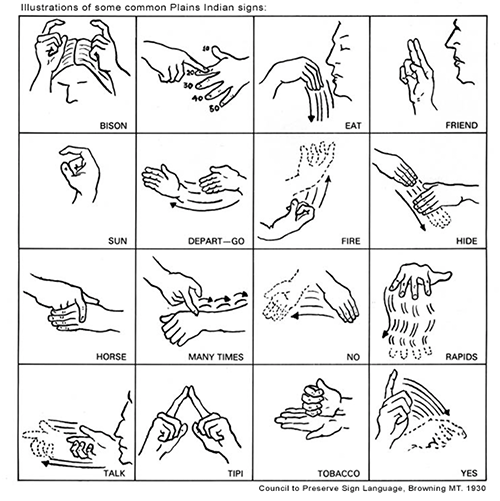
As a child, I was taught Plains Indian Sign Language (PISL), or Hand Talk, by my mother. PISL is a fascinating and culturally significant form of communication that has played a vital role in the history of Native American tribes. My mother wanted to ensure this language was passed down to me because of its importance to our family. While there is little information known on PISL, which offers a unique window into the cultural richness of Native American societies, we do have context regarding its significance.
What is PISL?
PISL is a precious form of expression within the Native American community. Unlike American Sign Language (ASL), which is a complete language with unique grammar and vocabulary, PISL is a silent language that served as a lingua franca and allowed different tribes to communicate with each other, even if they spoke different spoken languages. This made PISL invaluable for trade, hunting, resolving conflicts, storytelling, and sharing cultural rituals.
PISL is not just a set of hand signs, it is a powerful form of self-expression. It enables individuals to convey complex ideas and emotions without uttering a single word. It is a testament to the creativity and adaptability of human communication.
For Native American communities, PISL is a multi-faceted form of communication and a symbol of cultural identity. It is a way to connect with ancestors and preserve heritage. The intricate hand signs and gestures carry the wisdom and traditions of generations past.
Revitalization
Today, PISL is an endangered language. Over time, the use of PISL has declined, and there are only a handful of fluent speakers left. The good news is that efforts are underway to revitalize PISL and ensure that this important facet of Native American culture is maintained for future generations.
One of the key efforts to preserve PISL is the development of online courses and academic programs in regions with significant Native American populations, thereby safeguarding this vital language and its cultural context against the test of time.
Celebrating who we are
As we celebrate Native American Heritage Month, let us take a moment to appreciate the significance of PISL as a living testament to the resilience and cultural vibrancy of Native American communities. In a world where spoken words often dominate, both PISL and ASL are examples of the many avenues we use to communicate about the shared human experience.
Do you have a story idea for us? Do you want to submit a guest blog? If it's about equity, diversity, or inclusion, please submit to edi.stories@nih.gov.
For news, updates, and videos, subscribe or follow EDI on: Twitter (X), LinkedIn, Blog, YouTube.






